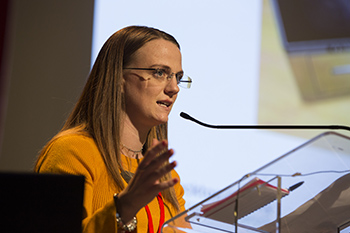Determination of cleanroom cleanliness through airborne particle monitoring : Should we be using faster flow rate particle counters ?
24 octobre 2018
Heather Stephenson BSc , Jamie Clarke BSc and Wayne Goddard MSc
Focal Points
- Can faster flow rate particle counters be used in environments with higher particle counts ?
- There is no statistical significant difference between results of the slower flow rate particle counters and the faster flow rate particle counters.
- Faster flow rate particle counters can be used in different graded clean rooms and will significantly reduce environmental monitoring times.
Introduction
The concentration of airborne particles is determined by the use of light scattering (discrete) airborne particle counters (LSAPC). Faster flow rate particle counters can reduce the time spent testing and therefore reduce the disruption to work flow and manufacturing. However there is evidence to suggest the faster flow rates may not produce accurate results in environments where there is a higher amount of particles. During operation of the particle counter within areas of high particle counts such as a GMP grade D room, the sensor can over concentrate which causes pairs of smaller particles to be counted as one larger particle. This could result in the faster flow rate particle counters being unsuitable for use in grade D units.
Method
The established null hypothesis was that the faster flow rate will not have any significant statistical effect on the data produced. Two particle counters were tested, the Climet cl-550 with the slower air flow rate of 1 cubic foot per minute (1 cfm) and the Climet cl-754 with the faster air flow rate of 75 litres per minute. The particle counters were both set up under a general AHU room inlet that was non HEPA filtered to replicate grade D conditions. 10L samples were chosen as during typical grade D/C testing the particle counters are set up to measure airborne particle counts in 10L samples. The particle counters record the time that each sample was taken and recorded. At the end both set of samples can be used to calculate the time each sampler takes to sample the same amount of air.
Results
The mean and the standard deviation were calculated for each of the 30 samples Fig. 1. A paired 2 tailed T- test was then carried out on the data.
The t-statistical value calculated from the standard deviation and mean was 1.360 which was below the t-critical value which was calculated at 2.002. Therefore the null hypothesis is accepted and it was found that the faster flow rate will not have any significant statistical effect on the data produced. The Climet cl-550 takes 21 seconds to sample 10 litres of air and the Climet cl- 754 takes 8 seconds to sample 10 litres of air.
Conclusion
The LSAPCs that have a flow rate of 1cfm take 35 minutes to sample 10 100L samples which would be typical of one isolator hatch. This means it could take roughly a total of 1 hour and 45 minutes to complete ‘at rest’ testing of one isolator. An entire unit may not be able to manufacture at all for a whole day during routine annual testing which is not ideal for such busy units who are already under a lot of pressure. The LSAPCs that have a flow rate of 75L per minute would roughly take 40 minutes to complete ‘at rest’ testing which is a full hour less than the slower 1cfm flow rate particle counters. There is not a significant statistical difference between the slower rate particle counter and the faster rate particle counter. Therefore using the faster flow rate particle counters can dramatically reduce time spent testing the clean room and clean air devices for airborne particle contamination and therefore reduce the disruption to manufacturing.
References
“Quality Assurance of Aseptic Preparation Services” 4th Edition Ed. A. M. Beaney, Pharmaceutical Press 2006 ISBN o 853696152.
BS EN ISO 14644-1 : 2015 Clean Rooms and Associated Controlled Environments Part 1 : Classification of air cleanliness by particle concentration.
BS EN ISO 14644-2 : 2015 Clean Rooms and Associated Controlled Environments Part 2 : Monitoring to provide evidence of cleanroom performance related to air cleanliness by particle concentration.
Clean Air and Containment Review ISSN 2042-3268 Issue 31 : July 2017.